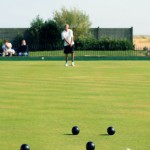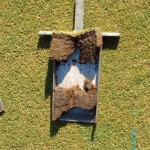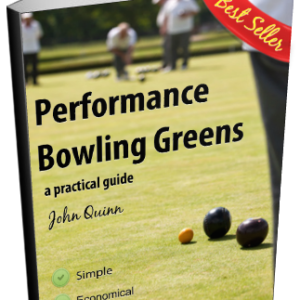Have you ever played a great game of bowls when everything on the green was perfect; you read every twitch on the rink and it seemed like you had finally got the green the way you wanted it.
The disappointment when you return to the green the very next day, prepare the rink in completely the same way but get totally different and inferior results is maddening.
What went wrong? or maybe what went right?
Like green speed, there is much debate about surface consistency, both in terms of consistency across the green surface and consistency of playing conditions over the season.
In order of their impact on green surface consistency these are the top 7 factors that you should bear in mind. Obviously there are others such as weather patterns, level of play etc, but these are largely out of the greenkeepers control and in any case do not figure highly in the management of green consistency.
- Fertiliser Policy; yesterday we talked about the role that Bio-Liquid fertilisers can play in producing Performance Bowling Greens. The use of these products is recommended primarily in order to help in the improvement of the underlying soil; but this has a knock on benefit of smoothing out the peaks and troughs of fast and slow growth to a more steady and slow growth pattern. I’ve made this my number 1, issue in achieving green surface consistency.
- Irrigation Management; understanding the water requirements and in particular soil water balance is an important aspect of green management. The finer grasses we seek to encourage can root more deeply than the weed annual meadow grass and as such our watering policy should be deeply, not daily.
- Localised Dry Patch Management; the scourge of many greens over the last 2 decades due, primarily to the overuse of sand top-dressings and the neglect of the soil/plant relationship. Localised Dry Patch is a condition (not a disease) that causes the soil to become hydrophobic (water repellent) and can cause major disruption to the surface levels. Localised Dry Patch is also a season long problem in most cases regardless of how much rain or irrigation there is; once it takes hold it is usually very difficult to overcome.
- Mowing Frequency; we looked at this issue in more depth last week. Mowing frequency is at least 100 times more relevant to green consistency than mowing height. Shaving the green down to 3mm is damaging to the grass plants and counterproductive in producing a performance green in the longer term. If we truly want a consistent green, we need to make some hard decisions on how we are going to manage the workload.
- Thatch Layer Control and Management; closely related to, and the catalyst for most other green maintenance problems, thatch is only a problem on intensively managed turf such as bowling greens. One of the most commonly discussed topic on this site.
- Compaction Control and Relief; one of the major catalysts for the build up of excessive thatch is the process of compaction of the soil. This causes the soil to become lacking aeration pore space and oxygen as a result.
- Sward Composition (grass types); a low priority on this list but none the less important in respect of the overall aim of the Performance Green Program. By doing the work required to encourage a tight sward of finer grasses we automatically do the things that encourage a healthy living soil and that is the key to a performance bowling green.



